Orthodox Outlet for Dogmatic Enquiries
ΕΛΛΗΝΙΚΑ αμέσως κάτω από το αγγλικό

From: The
Synaxarion, The lives of the Saints of the Orthodox Church, Volume
three, Holy convent of the Annunciation of Our Lady, Ormylia, 2001
Sources: impantokratoros.gr, MYSTAGOGY and:
http://groups.yahoo.com/group/celt-saints/message/3315A first approach to the indigenous Orthodox Saints and Martyrs of the Ancient Church who lived and who propagated the Faith in the British Isles and Ireland during the first millennium of Christianity and prior to the Great Schism is being attempted in our website in our desire to inform our readers, who may not be aware of the history, the labours or the martyrdom of this host of Orthodox Saints of the original One, Holy, Catholic and Apostolic Church of our Lord.
"The Church in The British Isles will only begin to grow when she begins to venerate her own Saints" (Saint Arsenios of Paros †1877)
Saint Brigid (Brigit, Bridget), "the Mary of the Gael," was born around 450 in Faughart (Fochart, Fothairt) , about two miles from Dundalk in County Louth in Ulster. According to tradition, her father was a pagan named Dubthach, and her mother was Brocessa (Broiseach), one of his slaves. Whether she was raised a Christian or converted in 468, as some accounts say, is unknown, but she was inspired by the preaching of Saint Patrick from an early age.
Even as a child, she was known for her compassion for the poor. She would give away food, clothing, and even her father's possessions to the poor. One day he took Brigid to the king's court, leaving her outside to wait for him. He asked the king to buy his daughter from him, since her excessive generosity made her too expensive for him to keep. The king asked to see the girl, so Dubthach led him outside. They were just in time to see her give away her father's sword to a beggar. This sword had been presented to Dubthach by the king, who said, "I cannot buy a girl who holds us so cheap."
St Brigid received monastic tonsure at the hands of St Mael of Ardagh (February 6). Some miles from Dublin she was granted by the King of Leinster possession of a plain called the Curragh, where she built herself a cell under a large oak tree, thence called Kill-dara, or Cell of the oak. Seven other girls soon placed themselves under her direction establishing the monastery of Kill-dara, which gave its name to the later cathedral city of Kildare. The community grew rapidly thanks to the renown of the holy Abbess, and became a double monastery, with the Abbess ranking above the Abbot, and branched out into several others all over Ireland. This was the beginning of women's cenobitic monasticism in Ireland.
The miracles performed by St Brigid are too numerous to relate here, but perhaps one story will suffice. One evening the holy abbess was sitting with the blind nun Dara. From sunset to sunrise they spoke of the joys of the Kingdom of Heaven, and of the love of Christ, losing all track of time. St Brigid was struck by the beauty of the earth and sky in the morning light. Realizing that Sister Dara was unable to appreciate this beauty, she became very sad. Then she prayed and made the Sign of the Cross over Dara's eyes. All at once, the blind nun's eyes were opened and she saw the sun in the east, and the trees and flowers sparkling with dew. She looked for a while, then turned to St Brigid and said, "Close my eyes again, dear Mother, for when the world is visible to the eyes, then God is seen less clearly by the soul." St Brigid prayed again, and Dara became blind once more.
St Brigid fell asleep in the Lord in the year 523 on February 1 after receiving Holy Communion from St Ninnidh of Inismacsaint (January 18). She was buried at Kildare, but her relics were transferred to Downpatrick during the Viking invasions. It is believed that she was buried in the same grave with St Patrick (March 17) and St Columba of Iona (June 9).
Late in the thirteenth century, her head was brought to Portugal by three Irish knights on their way to fight in the Holy Land. They left this holy relic in the parish church of Lumiar, about three miles from Lisbon. Portions of the relic were brought back to Ireland in 1929 and placed in a new church of St Brigid in Dublin.
The relics of St Brigid in Ireland were destroyed in the sixteenth century by Lord Grey during the reign of Henry VIII.
The tradition of making St Brigid's crosses from rushes and hanging them in the home is still followed in Ireland, where devotion to her is still strong. She is also venerated in northern Italy, France, and Wales.
The Book of Armaugh, an ancient Irish chronicle, calls Saint Patrick and Saint Brigid "the pillars of the Irish" and says that through them both, "Christ performed many miracles."
According to tradition, Saint Brigid (Brigit, Bridget) was born at Fochart (or Fothairt), near Dundalk of County Louth in Ulster, of a noble Irish family, which had been converted by Saint Patrick (17 Mar.). A wonderful striving for virtue was seen in her from her earliest years. Being uncommonly beautiful, she had many suitors and her father tried to marry her to the King of Ulster. At the age of sixteen, she implored Our Lord Jesus Christ, whom alone she desired as her spouse, to make her unattractive, so that no longer would anyone want to marry her. Her prayer was heard; she lost an eye, and was allowed to enter a monastery. However, on the very day that she took the veil, she was miraculously healed and recovered her original loveliness, which was now set off by spiritual beauty.
Some miles from Dublin she was granted possession of a plain called the Curragh, where she built herself a cell under a large oak tree, thence called Kill-dara, or Cell of the oak. Seven other girls soon placed themselves under her direction establishing the monastery of Kill-dara, which gave its name to the later cathedral city of Kildare. The community grew rapidly thanks to the renown of the holy Abbess, and became a double monastery, with the Abbess ranking above the Abbot, and branched out into several others all over Ireland.
Saint Brigid was often journeying to visit these foundations, and she wrought miracles everywhere along her way. She drove out demons simply by the sign of the Cross; she healed the sick, converted sinners, and her presence inspired love of God in the whole people. All the leading people of the day knew her and presented her with tokens of their admiration.
Having predicted the day of her decease, she fell asleep in peace on 1 February 524, bequeathing to her disciples a monastic Rule, which epitomized her teaching. She is regarded, on a par with Saint Patrick, as patroness of Ireland, and is venerated there as a Saint, second only to the Mother of God. During the Middle Ages the veneration of Saint Brigid spread throughout Europe.
Through the prayers of Thy Saints, Lord Jesus Christ, have mercy upon us. Amen.
St. Brigid of Kildare, Abbess & Virgin (Bride, Bridget, Brigit, Ffraid)
Born at Faughart (near Dundalk) or Uinmeras (near Kildare), Louth, Ireland, c. 450; died at Kildare, Ireland, c. 523; feast day is the 1st of February; feast of her translation is June 10.
"We implore Thee, by the memory of Thy Cross's hallowed and most bitter anguish, make us fear Thee, make us love Thee, O Christ. Amen." (Prayer of Saint Brigid).
Saint Brigid was an original--and that's what each of us are supposed to be, an original creation of the Almighty Imagination. Unfortunately, most of us get caught up in the desire to be accepted by others. We conform to the norm, rather than opening up to the creative power of God and blooming to render Him the sweet fragrance of our unique lives. We miss the glory of giving God the gift of who we were intended to be.
Brigid lacked that fault. She got things done. She had a welcome for everyone in an effort to help them be originals, too. She was so generous that she gave away the clothes from her back. She never shied away from hard work or intense prayer. She would brush aside the rules--even the rules of the Church--if it was necessary to bring out the best in others. Perhaps for this reason, the saint who never left Ireland, is venerated throughout the world as the prototype of all nuns. She bridged the gap between Christian and pagan cultures.
Brigid saw the beauty and goodness of God in all His creation: cows made her love God more, and so did wild ducks, which would come and light on her shoulders and hands when she called to them. She enjoyed great popularity both among her own followers and the villagers around; and she had great authority, ruling a monastery of both monks and nuns.
Her chief virtue lay in her gentleness, in her compassion, and in her happy and devoted nature which won the affection of all who knew her. She was a great evangelist and joined hands gladly and gaily with all the saints of that age in spreading the Gospel. So great was her veneration throughout Europe that the Medieval knights, seeking a womanly model of perfection, chose Brigid as the example. This theory maintains that such was the image of Brigid as the feminine ideal that the word "bride" passed into the English language. (This is unlikely, however. The word probably derives from the Old German "bryd," meaning bride.)
Historical facts about Saint Brigid's life are few because the numerous accounts about it after her death (beginning in the 7th century) consist mainly of miracles and anecdotes, some of which are deeply rooted in pagan Irish folklore. Nevertheless, they give us a strong impression of her character. She was probably born in the middle of the 5th century in eastern Ireland. Some say her parents were of humble origin; others that they were Dubhthach, an Irish chieftain of Leinster, and Brocca, a slave at his court. All stories relate that they were both baptized by Saint Patrick. Some say that Brigid became friends with Patrick, though it is uncertain that she ever met him. Beautiful Brigid consecrated herself to God at a young age. She was veiled as a nun by Saint Macaille at Croghan and consecrated as Abbess by Bishop Saint Mel at Armagh.

Icon from here
The Book of Lismore bears this story:
Brigid and certain virgins along with her went to take the veil from Bishop Mel in Telcha Mide. Blithe was he to see them. For humility Brigid stayed so that she might be the last to whom a veil should be given. A fiery pillar rose from her head to the roof ridge of the church. Then said Bishop Mel: "Come, O holy Brigid, that a veil may be sained on thy head before the other virgins." It came to pass then, through the grace of the Holy Spirit, that the form of ordaining a bishop was read out over Brigid. Macaille said that a bishop's order should not be confirmed on a woman. Said Bishop Mel "No power have I in this matter. That dignity hath been given by God unto Brigid, beyond every (other) woman." Wherefore the men of Ireland from that time to this give episcopal honour to Brigid's successor.
Most likely this story relates to the fact that Roman diocesan system was unknown in Ireland. Monasteries formed the centre of Christian life in the early Church of Ireland. Therefore, abbots and abbesses could hold held some of the dignity and functions that a bishop would on the Continent. Evidence of this can be seen also at synods and councils, such as that of Whitby, which was convened by Saint Hilda. Women sometimes ruled double monasteries; thus, governing both men and women. Bridget, as a pre-eminent abbess, might have fulfilled some semi-episcopal functions, such as preaching, hearing confessions (without absolution), and leading the neighbouring Christians.
Beginning consecrated life as a anchorite of sorts, Brigid's sanctity drew many others. When she was about 18, she settled with seven other like-minded girls near Croghan Hill in order to devote herself to God's service. About 468 she followed Saint Mel to Meath.
There is little reliable information about the convent she founded around 470 at Kildare (originally Cill-Daire or 'church of the oak'), the first convent in Ireland, and the rule that was followed there. This is one of the ways Brigid sanctified the pagan with the Christian: The oak was sacred to the druids, and in the inner sanctuary of the Church was a perpetual flame, another religious symbol of the druid faith, as well as the Christian. Gerald of Wales (13th century) noted that the fire was perpetually maintained by 20 nuns of her community. This continued until 1220 when it was extinguished. Gerald noted that the fire was surrounded by a circle of bushes, which no man was allowed to enter.
It is generally thought to have been a double monastery, housing both men and women--a common practice in the Celtic lands that was sometimes taken by the Irish to the continent. It's possible that she presided over both communities. She did establish schools there for both men and women. Another source says that she installed a bishop named Conlaeth there, though the Vatican officially lists the See of Kildare as dating from 519.
Cogitosus, a monk of Kildare in the eighth century, expounded the metrical life of St. Brigid, and versified it in good Latin. This is what is known as the "Second Life", and is an excellent example of Irish scholarship in the mid-eighth century. Perhaps the most interesting feature of Cogitosus's work is the description of the Cathedral of Kildare in his day:
"Solo spatioso et in altum minaci proceritate porruta ac decorata pictis tabulis, tria intrinsecus habens oratoria ampla, et divisa parietibus tabulatis".
(The rood-screen was formed of wooden boards, lavishly decorated, and with beautifully decorated curtains.)
Probably the famous Round Tower of Kildare dates from the sixth century (photo below).

The sixth Life of the saint printed by Colgan is attributed to Coelan, an Irish monk of the eighth century, and it derives a peculiar importance from the fact that it is prefaced by a foreword from the pen of St. Donatus, also an Irish monk, who became Bishop of Fiesole in 824. St. Donatus refers to previous lives by St. Ultan and St. Aileran.
Even as a child Brigid showed special love for the poor. When her mother sent her to collect butter, the child gave it all away. Her generosity in adult life was legendary: It was recorded that if she gave a drink of water to a thirsty stranger, the liquid turned into milk; when she sent a barrel of beer to one Christian community, it proved to satisfy 17 more. Many of the stories about her relate to the multiplication of food, including one that she changed her bath-water into beer to satisfy the thirst of an unexpected clergyman. Even her cows gave milk three times the same day to provide milk for some visiting bishops.
Brigid saw that the needs of the body and the needs of the spirit intertwined. Dedicated to improving the spiritual as well as the material lives of those around her, Brigid made her monastery a remarkable house of learning, including an art school. The illuminated manuscripts originating there were praised, especially the Book of Kildare, which was praised as one of the finest of all illuminated Irish manuscripts before its disappearance three centuries ago.
Once she fell asleep during a sermon of Saint Patrick, but he good-humouredly forgave her. She had dreamed, she told him, of the land ploughed far and wide, and of white-clothed sowers sowing good seed. Then came others clothed in black, who ploughed up the good seed and sowed tares in its place. Patrick told her that such would happen; false teachers would come to Ireland and uproot all their good work. This saddened Brigid, but she redoubled her efforts, teaching people to pray and to worship God, and telling them that the light on the altar was a symbol of the shining of the Gospel in the heart of Ireland, and must never be extinguished.
Brigid is called the 'Mary of the Gael' because her spirit of charity, and the miracles attributed to her were usually enacted in response to a call upon her pity or sense of justice. During an important synod of the Irish church, one of the holy fathers, Bishop Ibor, announced that he had dreamed that the Blessed Virgin Mary would appear among the assembled Christians. When Brigid arrived the father cried, "There is the holy maiden I saw in my dream." Thus, the reason for her nickname.
Her prayers and miracles were said to exercise a powerful influence on the growth of the early Irish Church, and she is much beloved in Ireland to this day.
When dying at the age of 74, St. Brigid was attended by St. Ninnidh, who was ever afterwards known as "Ninnidh of the Clean Hand" because he had his right hand encased with a metal covering to prevent its ever being defiled, after being the medium of administering the viaticum* to Ireland's Patroness.
(*viaticum = Holy Communion to a Christian on their deathbed)
She was interred at the right of the high altar of Kildare Cathedral, and a costly tomb was erected over her. In after years her shrine was an object of veneration for pilgrims, especially on her feast day, 1 February, as Cogitosus related. About the year 878, owing to the Scandinavian raids, the relics of St. Brigid were taken to Downpatrick, where they were interred in the tomb of St. Patrick and St. Columba.
A tunic reputed to have been hers, given by Gunhilda, sister of King Harold II, survives at Saint Donatian's in Bruges, Belgium. A relic of her shoe, made of silver and brass set with jewels, is at the National Museum of Dublin. In 1283, three knights took the head of Brigid with them on a journey to the Holy Land. They died in Lumier (near Lisbon), Portugal, where the church now enshrines her head in a special chapel.
In England, there are 19 ancient church dedications to her. The most important of which is the oldest church in London--St. Bride's in Fleet Street--and Bridewell or Saint Bride's Well. In Scotland, East and West Kilbride bear her name. Saint Brigid's Church at Douglas recalls that she is the patroness of the great Douglas family. Several places in Wales are named Llansantaffraid, which means "St. Bride's Church." The Irish Bishop Saint Donato of Fiesole (Italy) built a Saint Brigid's Church in Piacenza, where the Peace of Constance was ratified in 1185.
The best-known custom connected with Brigid is the plaiting of reed crosses for her feast day. This tradition dates to the story that she was plaiting rush crosses while nursing a dying pagan chieftain. He asked her about this and her explanation led to his being baptized.
Traditional Irish blessings invoke her. "Brid agus Muire dhuit, Brigid and Mary be with you" is a common Irish greeting, and in Wales people say, "Sanffried suynade ni undeith, St. Brigid bless us on our journey." A blessing over cattle in the Scottish isles goes: "The protection of God and Colmkille encompass your going and coming, and about you be the milkmaid of the smooth white palms, Brigid of the clustering, golden brown hair" (Attwater, Benedictines, Bentley, Delaney, Encyclopaedia, Farmer, Gill, Groome, Montague, O'Briain, Sellner, White).
She is usually portrayed in art with a cow lying at her feet, or holding a cross and casting out the devil (White). Her emblem is a lighted lamp or candle (not to be confused with Saint Genevieve, who is not an abbess). At times she may be shown (1) with a flame over her; (2) geese or cow near her; (3) near a barn; (4) letting wax from a taper fall upon her arm; or (5) restoring a man's hand (Roeder).

Brigid is the patron saint of Ireland, poets, dairymaids, blacksmiths, healers (White), cattle, fugitives, Irish nuns, midwives, and new-born babies (Roeder). She is still venerated highly in Alsace, Flanders, and Portugal (Montague), as well as Ireland and Chester, England (Farmer).
Troparion of St Brigid of Kildare Tone 1
O holy Brigid, thou didst become sublime through thy humility,/ and
didst fly on the wings of thy longing for God./ When thou didst arrive
in the eternal City and appear before thy Divine Spouse,/ wearing the
crown of virginity,/ thou didst keep thy promise/ to remember those who
have recourse to thee./ Thou dost shower grace upon the world, and dost
multiply miracles./ Intercede with Christ our God that He may save our
souls.
Kontakion of St Brigid in the Fourth Tone
The holy virgin Brigid full of divine wisdom,/ went with joy along the
way of evangelical childhood,/ and with the grace of God/ attained in
this way the summit of virtue./ Wherefore she now bestows blessings upon
those who come to her with faith./ O holy Virgin, intercede with Christ
our God/ that He may have mercy on our souls.
Apolytikion in the Fourth Tone
Having learned of things divine by the words of Patrick, thou hast proclaimed in the West the good tidings of Christ. Wherefore, we venerate thee, O Brigid, and entreat thee to intercede with God that our souls be saved.
Kontakion of St Brigid in the Third Tone
At the Church of the Oak, thou didst establish thy sacred monasteries for those that took up the Tree of life, even the Precious Cross, upon their shoulders. And by thy grace-filled life and love of learning, thou didst bear fruit a hundredfold and didst thereby nourish the faithful. O righteous Mother Brigid, intercede with Christ, the True Vine, that He save our souls.
See also:
More about St Brigid
The Orthodox Church in Great Britain: http://www.thyateira.org.uk/, http://www.antiochian-orthodox.co.uk/index.html
CELTIC & ANGLIAN
St. Patrick's Hymn A Convert’s Heritage – Western Saints
St. Melangell, the Righteous Abbess of Wales
St. Patrick's Hymn A Convert’s Heritage – Western Saints
St. Melangell, the Righteous Abbess of Wales
Klaus Kenneth, the spiritual traveler
Strange, Yet Familiar: My Journey (by Bishop Kallistos (Ware), Bishop of Diokleia)
Ancient Faith Radio
Orthodox America - By Issue Number
"The Orthodox World"
Saint Herman Press
Journey to Orthodoxy
Road to Emmaus
"Death to the world"
Orthodox Outlet for Dogmatic Enquiries
Orthodox America - By Issue Number
"The Orthodox World"
Saint Herman Press
Journey to Orthodoxy
Road to Emmaus
"Death to the world"
Orthodox Outlet for Dogmatic Enquiries
Aγία Μπριγκίτα η Θαυματουργός, η μεγάλη πνευματική μητέρα της ορθόδοξης Ιρλανδίας
Συλλογή άρθρων για την αγία Μπριγκίτα, που γιορτάζει 1 του Φλεβάρη μαζί με τον άγ. Τρύφωνα και άλλους αγίους. Προέρχεται από το ιστολόγιο Ορθοδοξία, που προσφέρει - μεταξύ άλλων - πολλά στοιχεία ιδιαίτερα για τους αρχαίους αγίους της Βρετανίας και άλλων δυτικών χωρών. Ας έχουμε την ευχή τους.
Οι μεταφράσεις των αγγλικών κειμένων έγιναν από τον αδελφό, το διαχειριστή του ιστολογίου.
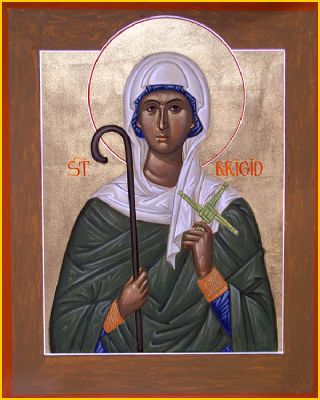
Από την ζωή της αγίας Brigid (Μπριγκίττα) της Ιρλανδίας
Μέρος α΄
Το βιβλίο του Lismore περιέχει αυτή την ιστορία:
Η Brigid και άλλες παρθένες μαζί της πήγαν να πάρουν το μοναχικό σχήμα από τον Επίσκοπο Mel στην περιοχή Telcha Mide. Εκείνος χάρηκε πολύ που τις είδε. Από ταπεινοφροσύνη η Brigid έμεινε πίσω ώστε να είναι η τελευταία που θα της δοθεί το μοναχικό σχήμα. Μια λαμπερή στήλη φωτός φάνηκε να βγαίνει από το κεφάλι της μέχρι το ταβάνι της Εκκλησίας. Τότε ο Επίσκοπος Mel είπε: «Πλησίασε, αγία Brigid, ώστε το μοναχικό σχήμα να σου δοθεί πριν από τις άλλες παρθένες.» Και τότε με την χάρη του Αγίου Πνεύματος, οι κανόνες με τους οποίους χειροτονούταν κάποιος Επίσκοπος διαβάστηκαν μπροστά στην αγία Brigid. Ο Macaille είπε πως το αξίωμα του επισκόπου δεν μπορούσε να δοθεί σε γυναίκα. Ο Επίσκοπος Mel απάντησε: «Δεν έχω εξουσία πάνω σε αυτό το ζήτημα. Αυτό το αξίωμα δόθηκε από τον Θεό στην Brigid, ξεχωριστά από όλες τις άλλες γυναίκες». Από τότε και μετά οι άνδρες της Ιρλανδίας έδιναν τιμές επισκόπου στους διαδόχους της Brigid.
Το ποιο πιθανό είναι πως αυτή η ιστορία μας φανερώνει πως το αρχιεπισκοπικό σύστημα της Ρώμης ήταν άγνωστο στην Ιρλανδία. Τα μοναστήρια ήταν το κέντρο της Χριστιανικής ζωής στην παλιά Εκκλησία της Ιρλανδίας. Παρόλα αυτά, οι ηγούμενοι και οι ηγουμένες μπορούσαν να έχουν κάποια αξιώματα ίδια με αυτά που είχαν οι Επίσκοποι. Στοιχεία για αυτό φανερώνονται στις συνόδους και στα συμβούλια, όπως σε αυτή του Whitby, η οποία διοικούταν από την αγία Hilda. Πολλές φορές οι γυναίκες διοικούσαν διπλά μοναστήρια στα οποία ηγουμένευαν και σε άντρες και σε γυναίκες. Η Brigid σαν διαπρεπής ηγουμένη, ίσως πραγματοποιούσε κάποιες λειτουργίες ενός επισκόπου, όπως το να κηρύττει, να ακούει εξομολογήσεις (χωρίς να έχει το δικαίωμα να δώσει άφεση αμαρτιών) και να καθοδηγεί τους γειτονικούς της Χριστιανούς.
Αφού ξεκίνησε μια ζωή σαν αναχωρήτρια, η αγιοσύνη της προσέλκυσε πολλούς άλλους. Όταν ήταν γύρω στα 18, εγκαταστάθηκε με άλλα εφτά κορίτσια που είχαν τις ίδιες ιδέες με αυτήν κοντά στον λόφο Croghan προκειμένου να αφιερώσει τον εαυτό της στην υπηρεσία του Θεού. Γύρω στο 468 ακολούθησε τον άγιο Mel στο Meath.
Υπάρχουν λίγες αξιόπιστες πληροφορίες σχετικά με το κοινόβιο που ίδρυσε γύρω στο 470 στο Kildare (αρχικό όνομα Cill-Daire ή εκκλησία της βελανιδιάς), το πρώτο κοινόβιο στην Ιρλανδία και για τους κανόνες που ακολουθούσαν εκεί. Μέσα στο ιερό της εκκλησίας έκαιγε συνέχεια μια φλόγα. Ο Gerald της Ουαλίας (13ος αιώνας) σημειώνει πως η φλόγα διατηρούταν συνεχώς αναμμένη από 20 μοναχές του κοινοβίου. Αυτό συνεχίστηκε μέχρι το 1220 όταν την σβήσανε. Ο Gerald σημειώνει πως η φωτιά περικυκλωνόταν από ένα κύκλο με θάμνους μέσα στον οποίο δεν επιτρεπόταν να μπει κανένας άντρας.
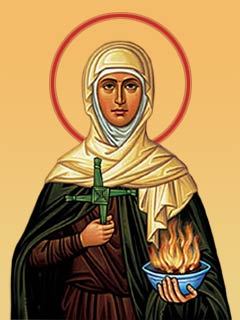
Γενικά πιστεύεται πως ήταν ένα διπλό μοναστήρι, στο οποίο έμεναν άντρες και γυναίκες, κάτι συνηθισμένο στην γη των Κελτών, το οποίο συχνά μετέφεραν οι Ιρλανδοί και στα περίχωρα. Είναι πιθανόν να ηγουμένευε και στις δύο κοινότητες. Εγκατέστησε σχολεία εκεί για γυναίκες και για άντρες. Μια άλλη πηγή λέει πως έβαλε έναν επίσκοπο εκεί ονόματι Conlaeth, παρότι το Βατικανό καταγράφει πως η επισκοπή του Kildare χρονολογείτε από το 519 και έπειτα.
Ο Cogitosus, ένας μοναχός του Kildare τον 8ο αιώνα, ανέπτυξε περισσότερο τον βίο της αγίας Brigid και τον μετέφρασε σε καλά Λατινικά. Αυτό το έργο είναι γνωστό σαν «Η δεύτερη ζωή», και είναι ένα εξαιρετικό δήγμα Ιρλανδικής λογοτεχνίας στα μέσα του 8ου αιώνα. Πιθανόν το ποιο ενδιαφέρον στο έργο του Cogitosus είναι η περιγραφή του Καθεδρικού του Kildare εκείνον τον καιρό: «Solo spatioso et in altum minaci proceritate porruta ac decorata pictis tabulis, tria intrinsecus habens oratoria ampla, et divisa parietibus tabulates» που σημαίνει «το τέμπλο ήταν φτιαγμένο από ξύλινα σανίδια, πλουσιοπάροχα διακοσμημένο και με όμορφα διακοσμημένες κουρτίνες.»
Πιθανόν ο γνωστός Κυλινδρικός Πύργος του Kildare να χρονολογείτε γύρω στον 6ο αιώνα.
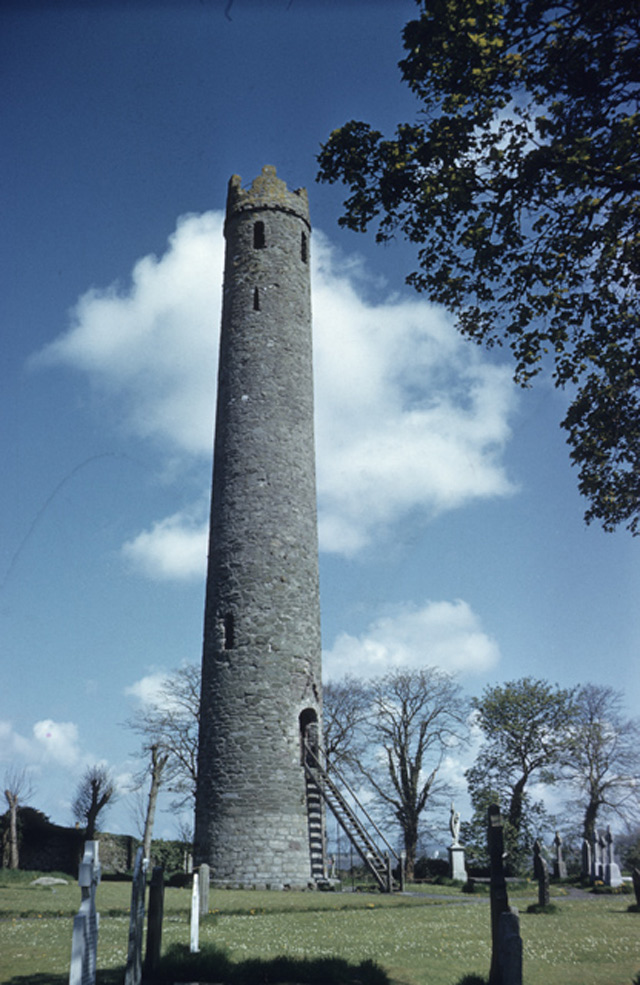
Μέρος β΄
Ακόμη και σαν παιδί η Brigid έδειχνε ιδιαίτερη αγάπη για τους φτωχούς. Όταν η μητέρα της την έστειλε να μαζέψει βούτυρο, το μοίρασε όλο. Η γενναιοδωρία της σαν ενήλικη ήταν ιστορική. Έχει καταγραφεί πως αν έδινε ένα ποτήρι νερό σε έναν διψασμένο άγνωστο, το υγρό άλλαζε και γινόταν γάλα. Όταν έστειλε κάποτε ένα βαρέλι με μπύρα σε μια Χριστιανική κοινότητα, η μπύρα έφτασε για 17 επιπλέον άτομα (ενώ το περιεχόμενο ήταν για λιγότερα). Πολλές από τις ιστορίες για αυτήν την σχετίζουν με πολλαπλασιασμούς φαγητού, μια από αυτές μας λέει πως μετέτρεψε το νερό που προοριζόταν για το μπάνιο της σε μπύρα προκειμένου να ικανοποιήσει τη δίψα ενός κληρικού που ήρθε απροειδοποίητα. Ακόμη και οι αγελάδες της έδιναν γάλα τρεις φορές την ίδια ημέρα για να έχουν γάλα για κάποιους επισκόπους που τους επισκέφτηκαν.
Η Brigid έβλεπε τις ανάγκες του σώματος και τις ανάγκες του πνεύματος μαζί. Αφοσιωνόταν στο να βελτιώσει τις πνευματικές καθώς και τις υλικές ζωές εκείνων που ήταν γύρω της, η Brigid έκανε το μοναστήρι της έναν αξιοσημείωτο οίκο μόρφωσης που περιελάμβανε ένα σχολείο τεχνών. Τα φωτισμένα χειρόγραφα που φτιάχνονταν εκεί ήταν ξακουστά, ειδικά το βιβλίο του Kildare, το οποίο ήταν γνωστό σαν ένα από τα ομορφότερα από όλα τα φωτισμένα Ιρλανδικά χειρόγραφα πριν από την εξαφάνιση του τρεις αιώνες πριν.
Κάποτε κοιμήθηκε κατά την διάρκεια μιας λειτουργίας του αγίου Πατρικίου*, όμως ο αγαθός άγιος την συγχώρεσε. Είχε ονειρευτεί, του είπε, μια γη που ήταν όλη οργωμένη και πλατιά και σπορείς με λευκά ρούχα έσπερναν καλό σπόρο. Έπειτα ήρθαν άλλοι ντυμένοι με μαύρα, οι οποίοι όργωσαν τον καλό σπόρο και έσπειραν ζιζάνια στη θέση του. Ο Πατρίκιος της είπε πως θα συμβεί το εξής: «Διδάσκαλοι με λανθασμένη διδασκαλία θα έρχονταν στην Ιρλανδία και θα ξερίζωναν όλη την καλή δουλειά που είχαν κάνει». Αυτό στενοχώρησε την Brigid, όμως διπλασίασε τις προσπάθειες της, διδάσκοντας τους ανθρώπους να προσεύχονται και να δοξάζουν τον Θεό και λέγοντας τους πως η φωτιά πάνω στο ιερό ήταν ένα σύμβολο της λάμψης του Ευαγγελίου στην καρδιά της Ιρλανδίας και δεν πρέπει ποτέ να σβήσει.
*Σύμφωνα με την παράδοση ο άγιος Πατρίκιος βάπτισε την αγία Brigid και ήταν δάσκαλος της.
Αγγλικό κείμενο εδώ (αυτό που έχουμε παραπάνω). Μετάφραση του ιστολογίου "Ορθοδοξία".
Μέρος γ΄
Η επιρροή της αγίας Brigit στους νέους ανθρώπους ήταν απεριόριστη, καθώς η πραότητα της έδινε δεκαπλάσια δύναμη στα λόγια της. Κάποτε, βλέποντας έναν νεαρό άντρα, έναν μαθητή του διπλανού σχολείου, να τρέχει με πολύ φόρα και με απρεπή τρόπο μπροστά σε κάποιες από τις μοναχές της, πήγε κοντά του και τον ρώτησε γιατί τρέχει με τόση βιασύνη. Εκείνος αποκρίθηκε απερίσκεπτα και με κάποιον αστεϊσμό πως έτρεχε προς τον Παράδεισο. Σε αυτό του απάντησε με ηρεμία: «Προσεύχομαι στο Θεό, αγαπητέ γιε μου, να ήμουν άξια να τρέξω μαζί σου σήμερα στο ίδιο μέρος. Σε ικετεύω να προσευχηθείς για εμένα για να με βοηθήσεις να φτάσω εκεί».
Και όταν εκείνος άκουσε αυτά τα λόγια και κοίταξε το σοβαρό καλοσυνάτο πρόσωπο της, συγκινήθηκε πολύ και της είπε με δάκρυα στα μάτια του πως σίγουρα θα προσευχόταν για εκείνη και για πολλούς άλλους και την ικέτευσε να προσφέρει τις προσευχές της για αυτόν ώστε να μπορέσει να συνεχίσει το ταξίδι του σταθερά προς τον Παράδεισο και να φτάσει τελικά εκεί. Αυτός ο νέος άντρας, το όνομα του οποίου ήταν Ninnius, έγινε έπειτα ένας από τους ποιο τιμημένους Ιρλανδούς αγίους.
Αγγλικό κείμενο http://www.saintbrigit.org/lifeofstbrigit3.html
Μέρος δ΄ (αγγλική πηγή εδώ)
Γεμάτη από ουράνια έμπνευση, επιθύμησε να αφιερώσει τον εαυτό της σαν μια αγνή παρθένα στον Θεό και αναζήτησε τον ποιο άγιο επίσκοπο τον Macc Caille. Βλέποντας εκείνος την ουράνια επιθυμία της και την μετριοφροσύνη της και την μεγάλη της αγάπη για την ελεημοσύνη, τοποθέτησε ένα λευκό πέπλο και ένα ολόλευκο και καθαρό φόρεμα επάνω στην αγία κεφαλή της (το μοναχικό ένδυμα των Κελτών αναφέρεται σε διάφορες πηγές πως είχε λευκό χρώμα).
Ένα ποίημα για την αγία Brigid (Μπριγκίτα) της Ιρλανδίας (από εδώ)
Ένα υπέροχο ποίημα αφιερωμένο στην αγία Brigid μας λέει για τα πράγματα τα οποία επιθυμούσε περισσότερο. Εάν δεν έχει γραφτεί από την ίδια την αγία, τότε σίγουρα έχει γραφτεί από κάποιον που την αγαπούσε και γνώριζε πολύ καλά την αγαθή φύση της:
Θα ευχόμουν μια μεγάλη λίμνη από ζύθο για τον Βασιλέα των Βασιλέων.
Θα ευχόμουν η οικογένεια του Παραδείσου να πίνει αιώνια.
Θα ευχόμουν οι άνθρωποι του Παραδείσου να επισκέπτονταν το σπίτι μου.
Θα ευχόμουν να τους δοθούν δοχεία γεμάτα γαλήνη.
Θα ευχόμουν να χαίρονται καθώς θα πίνουν.
Θα ευχόμουν ο Ιησούς να ήταν εδώ ανάμεσα τους.
Θα ευχόμουν οι τρεις Μαρίες να ήταν εδώ.
Θα ευχόμουν οι άνθρωποι του Παραδείσου από κάθε μεριά να ήταν εδώ.
Θα ευχόμουν να ήμουν σε ένα σπίτι που θα ανήκε στον Χριστό και να πλήρωνα σε αυτόν την διαμονή μου, έτσι όταν θα είχα κάποιο πρόβλημα θα μου έδινε μια καλή ευλογία.
Λέγεται πως ο Κύριος πρόσφερε στην Brigid οτιδήποτε ζητούσε και εκείνο που επιθυμούσε ήταν πάντα το ίδιο «να ικανοποιήσει τους φτωχούς, να εκδιώξει κάθε κακουχία και να σώσει κάθε θλιμμένο άνθρωπο». Φαίνεται πως στην αγάπη της για τους άλλους η αγία Brigid πραγματικά ξεχνούσε τον εαυτό της και άφηνε την αγάπη και την πρόνοια του Θεού να την συντηρεί.
Αγγλικό κείμενο A Gift of Hospitality - Saint Brigid, Abbess of Kildare (Orthodox America)
Ένα εικονοστάσι της αγίας Brigit (Μπριγκίτα) της Ιρλανδίας (από εδώ)
Εικόνα της αγίας Brigit:

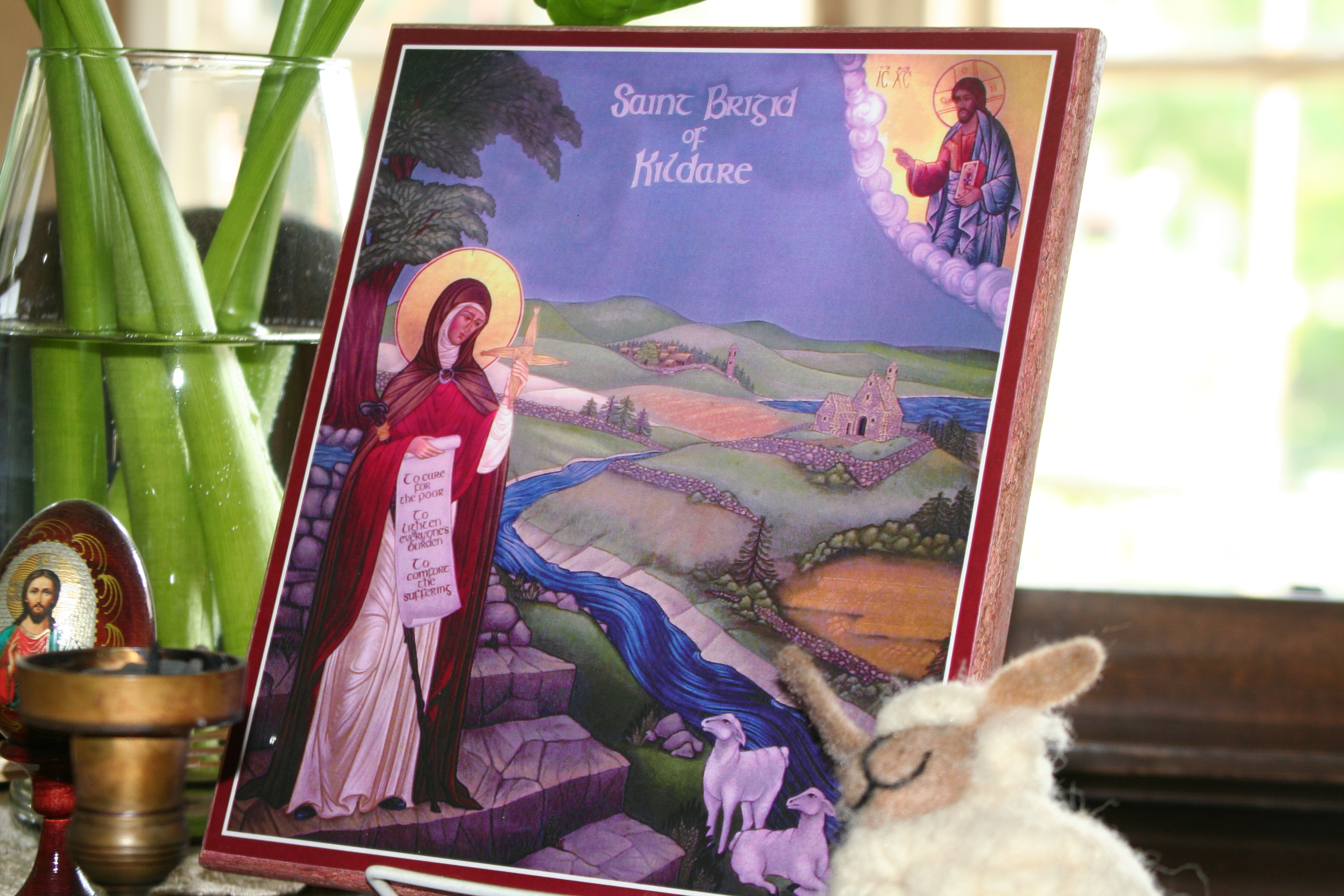
Εικονοστάσι με τον αχυρένιο σταυρό της αγίας Brigit:
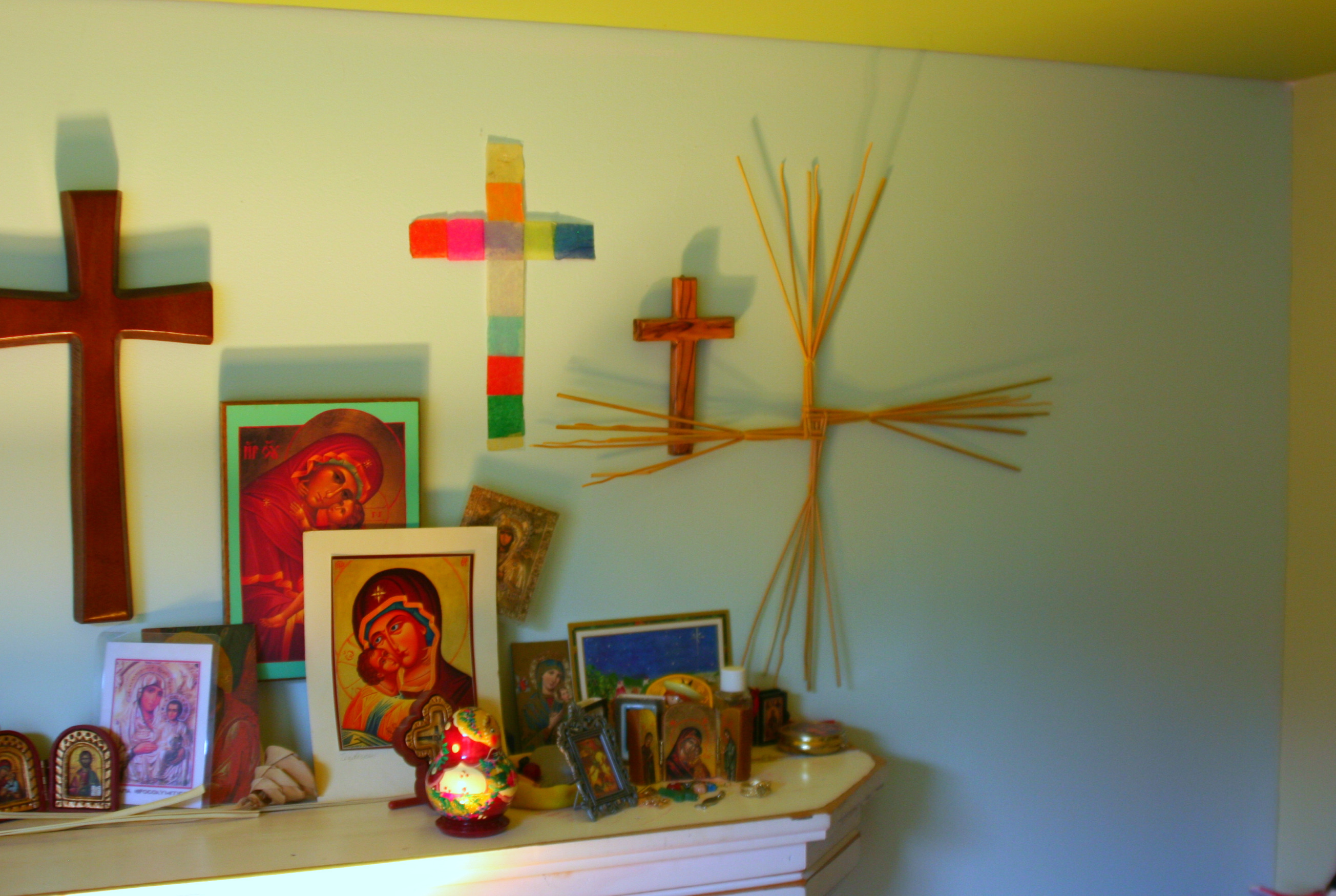
Ένα Ορθόδοξο βιβλίο για παιδιά με τον βίο της αγίας Brigit:
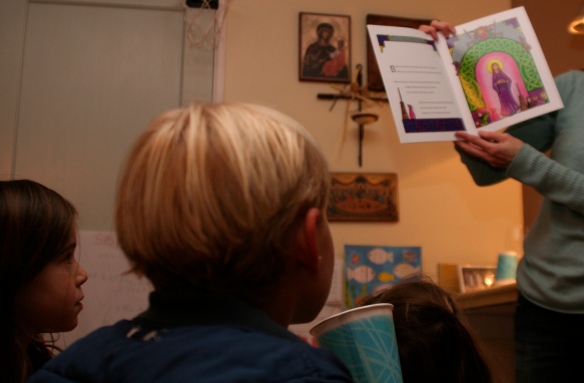
Από https://janegmeyer.wordpress.com/tag/saint-brigid-cross/
Κελτική ευλογία για την φωτιά τη νύχτα - Σχετικά με την αποτροπή της πυρκαγιάς και τον σταυρό της αγίας Μπρίγκιτ (από εδώ)

Σβήνω την φωτιά στην εστία όπως την σβήνει η Μαρία.
Η επαγρύπνηση της αγίας Μπρίγκιτ και της Μαρίας να βρίσκονται επάνω στη φωτιά και πάνω στο πάτωμα και σε όλο το νοικοκυριό.
Ποιος στέκεται στο γρασίδι έξω; Η Μαρία που λάμπει σαν τον ήλιο και ο Υιός της.
Το στόμα του Θεού ζήτησε, ο άγγελος του Θεού μίλησε: «Άγγελοι φυλάξτε την εστία ώσπου η λαμπρή μέρα να επισκεφτεί τη φωτιά».
Αγγλικό κείμενο: από το βιβλίο «The little book of Celtic blessings» σελ. 15.
Ένα Ιρλανδικό τραγούδι για την αγία Brigit

Ένα Ιρλανδικό τραγούδι για την αγία Brigit:
Εξυμνώ την αγία Brigid
Την εξυμνούν στην Ιρλανδία
Την εξυμνούν σε όλες τις χώρες
Ας την εξυμνήσουμε όλοι μας
Η λαμπρή φλόγα του Leinster
Λάμπει σε όλη τη χώρα
Κεφαλή της Ιρλανδικής νιότης
Κεφαλή των ευσεβών γυναικών μας
Το σπίτι τον χειμώνα είναι πολύ σκοτεινό
Όμως την ημέρα της αγίας Brigid
η άνοιξη είναι κοντά σε εμάς στην Ιρλανδία.
Ένας πολύ γνωστός Ουαλός, ο Gerald Barry (Giraldus Cambrensis), ο οποίος βρισκόταν στην Ιρλανδία το 1185, έγραψε, πως βρήκε το Kildare στο Leinster να εορτάζει την ένδοξη Brigit, η εορτή ονομαζόταν «Η Φλόγα της Αγίας Brigit» η οποία αναφέρεται πως δεν έσβηνε ποτέ. Αυτή η φωτιά διατηρούταν αναμμένη μέρα και νύχτα από τις μοναχές της εποχής του και για αιώνες πριν, πόσο πριν κανείς δεν μπορεί να πει, πιθανόν από τον καιρό της αγίας και συνέχυσε να διατηρείτε αναμμένη αιώνες μετά. Τελικά την έσβησαν όταν τα μοναστήρια έκλεισαν από τον βασιλιά Ερρίκο τον όγδοο το έτος 1536. Ο Thomas Moore, σε ένα από τα τραγούδια του, αναφέρεται σε αυτό με τις ακόλουθες λέξεις: «Σαν την λαμπρή φλόγα που έλαμπε στου Kildare το Ιερό και έκαιγε μέσα στους αιώνες στο σκοτάδι και την καταιγίδα».
Να υπενθυμίσουμε εδώ πως η φλόγα που άναψε η Brigit στο Ιερό στο μοναστήρι της στο Kildare της Ιρλανδίας συμβόλιζε το φως που έφερε το Ευαγγέλιο στην Ιρλανδία και είχε δώσει εντολή να μη σβήσει ποτέ η φλόγα.
Το βίντεο με το τραγούδι δείτε το στο τέλος του αγγλικού κειμένου της ανάρτησής μας, πιο πάνω.
Και κλείνουμε με:
Βιβλία για την Κέλτικη Ορθοδοξία
Orthodox England
Ορθόδοξοι άγιοι της δύσης (περιεκτικό αφιέρωμα με αρκετά άρθρα)


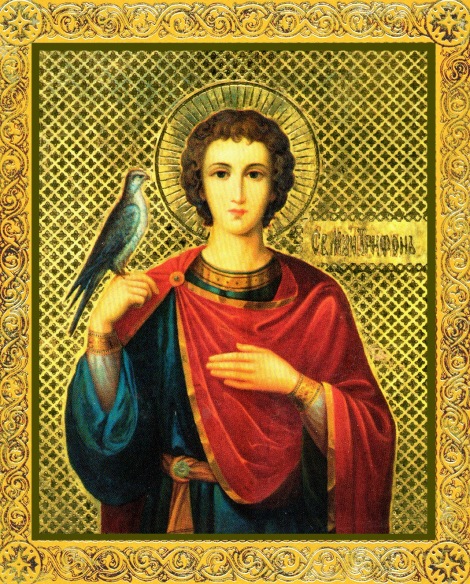

3 σχόλια:
Η αγία Brigid και ο σκύλος.
Η μεγάλη καλοσύνη της καρδιάς της δεν περιοριζόταν στους ανθρώπους. Απλωνόταν μέχρι και στα ποιο ασήμαντα ζώα. Κάποτε, ενώ ζούσε στο σπίτι του πατέρα της (όταν ήταν μικρό κορίτσι), φιλοξενούσαν μια συντροφιά καλεσμένων και της έδωσαν μερικά κομμάτια κρέατος για να τα μαγειρέψει για δείπνο. Ένας κακόμοιρος, μίζερος, πεινασμένος σκύλος μπήκε στο σπίτι και κοίταξε με λαχτάρα το κρέας. Τότε το κορίτσι που δεν μπορούσε να διώξει το συναίσθημα της ευσπλαχνίας, του έριξε ένα από τα κομμάτια. Και όταν το φτωχό ζώο, μέσα στην μανία της πείνας του, το καταβρόχθισε αμέσως, εκείνη του έδωσε ένα ακόμη το οποίο το ικανοποίησε. Και μέχρι και την τελευταία μέρα της ζωής της διατήρησε την τρυφερότητα της καρδιάς της και την καλοσύνη της και την φιλανθρωπία της προς τους φτωχούς.
orthodoxy-rainbow.blogspot.gr/2014/10/brigit-3.html
Πολύ όμορφη παρουσίαση!
Η αγία Μπρίτζετ να μας φωτίζει με την φλόγα της.
Σας ευχαριστώ. Βοήθειά μας οι άγιοι...
Δημοσίευση σχολίου